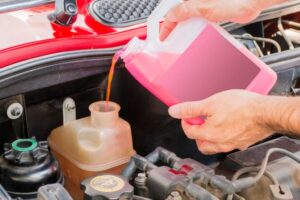Are you confused about whether you need to buy antifreeze or coolant for your car? Some people say they are the same thing and can use them interchangeably. However, what is the difference between antifreeze vs coolant?
Antifreeze and engine coolant are similar, but they are not the same. Antifreeze is a concentrated glycol-based product. So, before using you have to dilute it with water, which is now called the coolant. Depending on the application, you can make a coolant with a 50:50 or 70:30 antifreeze to water ratio.
Read on to learn more about the differences between antifreeze vs coolant and how to use them properly to prevent engine damage.
Antifreeze Vs Coolant
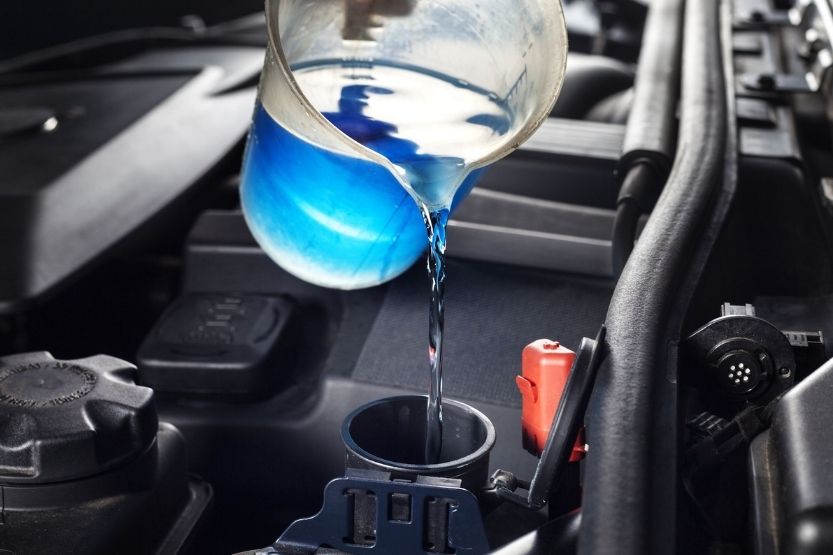
Antifreeze Is the Base Ingredient of Engine Coolant
Most car owners use the terms antifreeze and coolant interchangeably, but the truth is they are completely different products. Antifreeze is the base ingredient of engine coolant made of either ethylene glycol or propylene glycol. To make engine coolant, you need to mix equal parts of antifreeze and water. This is the cocktail of fluids you will usually find in water-cooled vehicles.
50:50 vs 70:30 Coolant to Water Ratio
As mentioned earlier, the engine coolant has a 50-50 water-to-coolant ratio. However, if you live where the temperature occasionally drops well below zero, you might need up to 70-30 antifreeze blend.
The regular 50-50 mix works just fine for engines operating at normal working temperatures. The engine operates at more than 200° F. It also prevents freezing at temperatures reaching -30° F.
Using Water as a Coolant Is Not Enough
Using water alone does not have nearly enough cooling capability or freezing protection that your car’s engine needs. Pure water boils and starts turning into steam at 212° F. It will also begin freezing solid at just 32° F. Impure water will boil and freeze at much smaller temperature ranges.
Moreover, water causes rust to develop in the cooling system, thus reducing its efficiency even further. Also, when water freezes into ice, it will expand. This will cause the pipes in your cooling system to crack and burst. The expanding ice might even be enough to crack the engine block in worst-case scenarios.
Using Pure Antifreeze Is Not Enough Protection Against Freezing
On the other hand, straight antifreeze will not provide enough protection against freezing. The reason is that it will freeze at 0° F. However, if you combine equally distilled water with antifreeze, the engine coolant will have a freezing point of -35° F. The boiling point will be higher than 223° F.
How Long Does Antifreeze Last?
How the Cooling System Works
Before learning the importance of using proper engine coolant, you should understand how the cooling system works. This will give you a better idea of why you should use coolant instead of water.
Heat from Engine Can Break Down Lubricant
Even if you have a properly lubricated engine, the moving parts that rub against each other will create friction. This will, in turn, produce heat. If the heat in your engine gets too high, it will cause the lubricant to break down. It will further cause the moving parts to seize and get seriously damaged. This is what we refer to as engine overheating.
Coolant Absorbs the Excess Heat from the Engine
The cooling system is a network of pipes and hollow channels in the engine where coolant flows through. A pump would push the engine coolant through the cooling system from a reservoir. The coolant would then absorb the excess heat coming from the engine.
It would then go through the radiator, where a huge fan will cool down the coolant. This is before it goes back to the reservoir. The entire process repeats over and over while the engine is running.
Why You Should Not Use Water as a Coolant
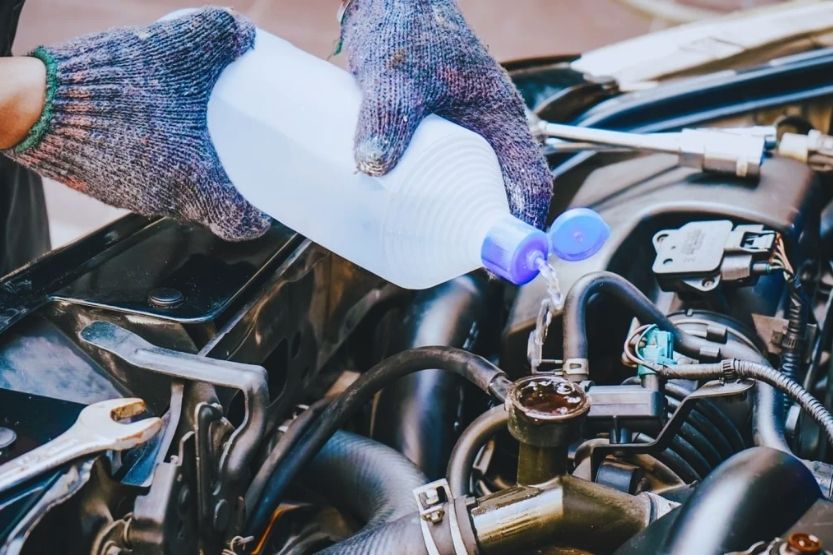
It is not that you cannot use water to cool your car’s engine. You can use it if you want to, but I strongly advise against it. Here are the reasons why using water as a coolant is not a good practice:
1. Evaporates Quickly
Unlike engine coolant, water has a lower boiling point at 212°F compared to more the 223°F for coolant. A regular gasoline engine operates anywhere between 195° F to 220° F. This means that the water would easily evaporate while running. Top up the reservoir constantly to keep up with the amount of water that disappeared.
If you are on the road for an extended period, check the water level constantly for at least two hours. Top up when needed. Forgetting to do so will cause the engine to heat up quickly.
2. Steam Will Break the Radiator
Water is not also ideal as when it turns into steam; it will cause pressure buildup in the cooling system. If enough water turns into steam, it could seriously damage the radiator. This can impair the cooling system even further.
3. Water Freezes Easily
Coolant contains antifreeze, which prevents it from turning into ice crystals when the outside temperature drops. On the other hand, the water turns into solid ice once the temperature drops to below 32° F. The strange thing about water is that it also expands when it freezes. If there is ice in your cooling system, the pipes will crack and burst.
In a pinch, you can use water to top up the coolant level in your car. However, you will need to flush the cooling system completely soon afterward. Replace the fluid with a brand-new coolant. Letting the water sit in the cooling system for too long will cause rust deposits to form. This will be harder to clean later.
Again, antifreeze vs coolant – what is the difference? Antifreeze and coolant are similar products. Antifreeze is a concentrated glycol-based liquid. To make a coolant, make a solution of antifreeze and water with a 50:50 ratio.
What Type of Engine Coolant Should You Use?
You do not just use any coolant you can find. There are certain things you need to consider when choosing engine coolants. The first thing that you need to know is what type of engine coolant do you need? In this regard, you will be choosing between Type A and Type B coolants.
Type A Coolant
Type A coolant contains antifreeze and anti-boiling components, typically ethylene glycol. You can use it to raise the coolant’s boiling point and lower its freezing point. This type of coolant also comes with different inhibitor packages depending on the application.
Type B Coolant
Also called a coolant inhibitor, Type B coolant is quite similar to the Type A coolant. However, it is also different because it contains only 5-10% additives. You can often use this product as a rust inhibitor and not necessarily an engine coolant. You can also usually find this type of coolant in vehicles made before 1980.
Different Colors of Coolant
Aside from the type, you should also be wary of the color of coolant your car uses. The different colors come from the dyes added by the manufacturers. This is to differentiate their base compounds.
If this is your first time buying a coolant for your car, identify the color that’s already in it. Ensure that you are getting the same color. Also, check the owner’s manual of your car to determine the proper coolant you need to use.
Based on colors, the most common coolants available in most automotive supply stores are green, red, blue, and yellow or orange:
1. Green
It is the most common one used in cars today. It has an ethylene glycol base.
2. Red
It contains an organic acid technology base with a different chemical composition than the green coolant. This coolant is ideal for cooling systems that use aluminum radiators rather than copper and stainless steel. Moreover, red coolant is also phosphate and silicate-free to comply with Japanese and European automotive standards.
3. Blue
Just like the red one, it has an organic technology base. However, note that, unlike the former, this one is borate-free. This is another requirement for modern Japanese vehicles.
4. Yellow or Orange
They are the latest coolant technology and are touted as a universal product. This means that all vehicles can use this coolant. It will also allow for mixing up to a certain amount. If you cannot find the coolant color currently used by your car, use orange or yellow to top up.
FAQs – Antifreeze vs Coolant
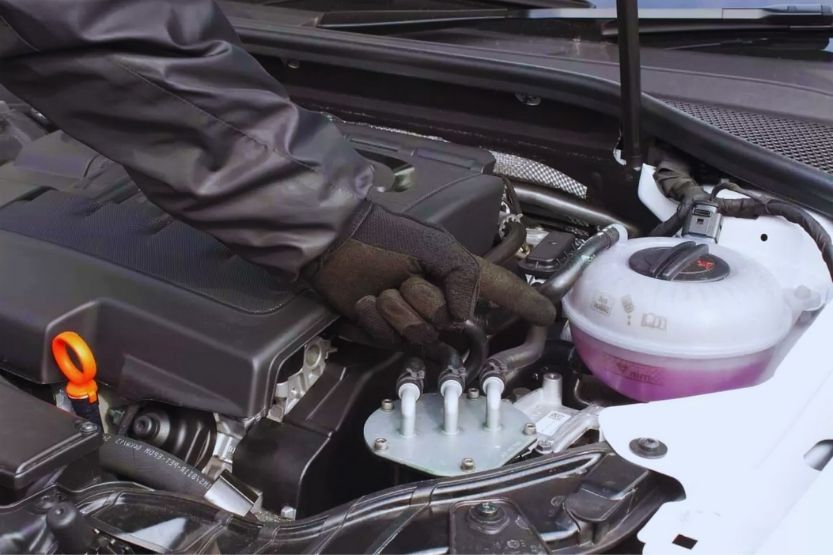
How to Know If the Coolant Is Running Low
Even though engine coolant does not evaporate as quickly as water, it still does evaporate over time. This is why you will always need to check the coolant level regularly.
Pop the hood open and look for the coolant reservoir to check if your engine still has enough coolant. It is typically a white plastic bottle next to the radiator. The reservoir is a bit translucent, so you can see its coolant level without taking off the cap. Make sure that the coolant level is just up to the maximum mark. It could also be anywhere between minimum and maximum.
Why Should You Not Go Beyond the Maximum Mark?
The maximum mark is there for a reason. It provides a buffer zone to prevent damage to the cooling system. Even though engine coolant does not evaporate easily, it still expands when heated. When there is too much coolant in the system, there would not be enough room to accommodate expansion. This will then lead to serious damage.
On the other hand, you should not let the coolant get too low. If there isn’t enough coolant circulating in the cooling system, it can’t keep the engine temperature below the critical limit.
How Long Before You Need to Replace Engine Coolant
Almost all coolants contain rust inhibitors. As the name suggests, this rust inhibitor prevents the engine components from corroding. After a while, the coolant will have too much contaminant buildup. It will then cause the anti-boiling and anti-freezing additives to deteriorate. Simply put, the coolant will lose efficiency over time.
The problem here is that there is no set length of time or distance traveled when replacing the engine coolant. It often depends on the recommendation of the car manufacturer and the quality of the coolant it currently uses.
Some brands recommend flushing the cooling system and replacing the coolant every three years or 75,000 kilometers, whichever comes first. Meanwhile, others say that the coolant is still good up to 200,000 kilometers.
How often you change the coolant will also depend on how well you take care of your car. It also depends on whether or not there are underlying mechanical issues.
Conclusion – Antifreeze Vs Coolant
Antifreeze and engine coolant are similar products, but at the same time, they are also different. Antifreeze is the base compound used for making engine coolants. It is a glycol-based substance that you should dilute with distilled water to make engine coolant.
However, you can also combine it at a 70:30 ratio for icy weather conditions. Engine coolant is an integral component that ensures that your engine works optimally.
It can also help prevent serious damage. Just like any other fluid used in your car’s engine, ensure that the coolant is always at the right level. Do not replace it with water unless it is necessary.
Read next:



![Moped Vs Scooter [What Are the Differences Between Them?] moped vs scooter](https://roadsumo.com/wp-content/uploads/2021/06/moped-vs-scooter-150x150.jpg)
![How to Put Antifreeze in Car [Where Does Antifreeze Go?] how to put antifreeze in car](https://roadsumo.com/wp-content/uploads/2022/01/how-to-put-antifreeze-in-car-150x150.jpg)
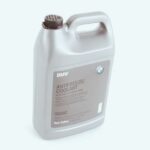
![Oil in Coolant [Causes and Solutions to Coolant in Oil] oil in coolant](https://roadsumo.com/wp-content/uploads/2021/10/oil-in-coolant-150x150.jpg)
![Read more about the article Can I Use 5w30 Instead of 5w20? [5w30 vs 5w20 Motor Oil]](https://roadsumo.com/wp-content/uploads/2021/04/can-I-use-5w30-instead-of-5w20-300x200.jpg)

